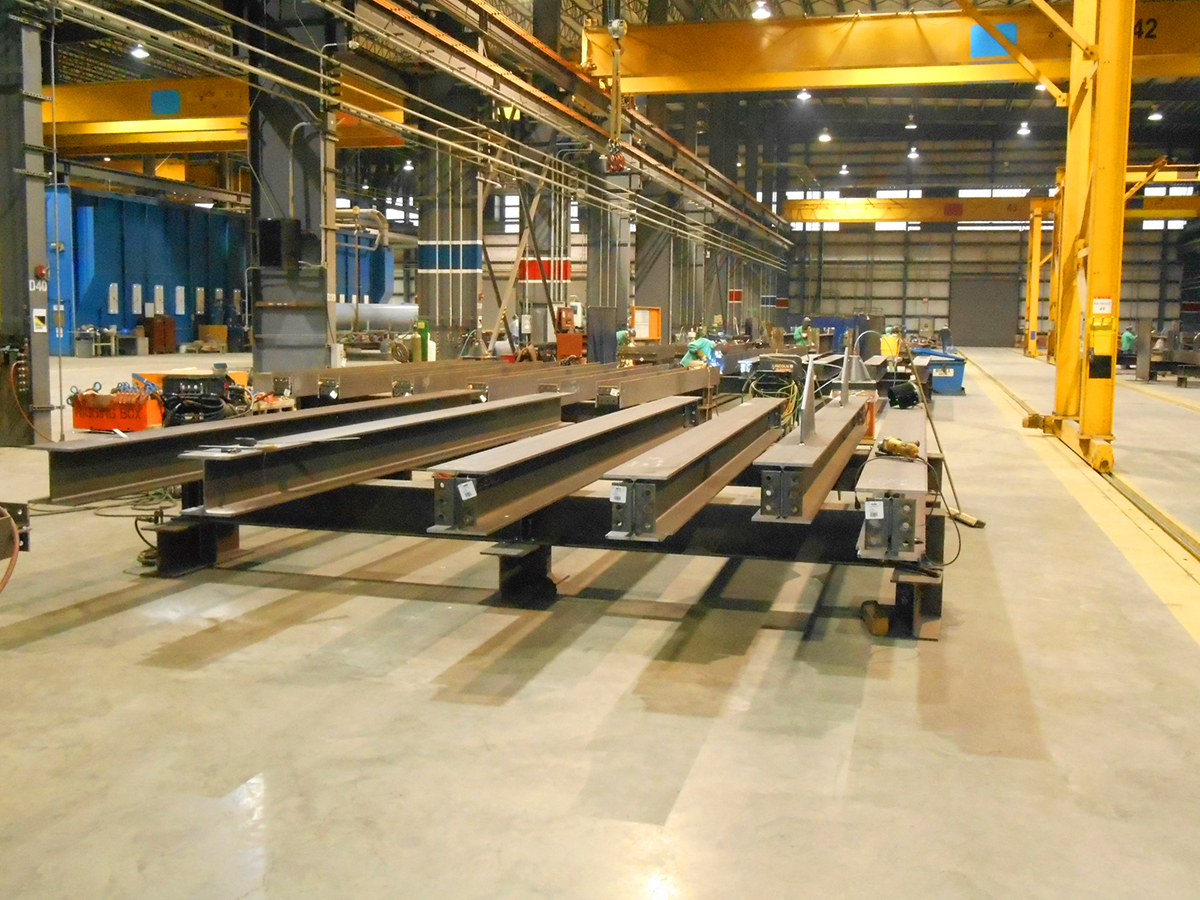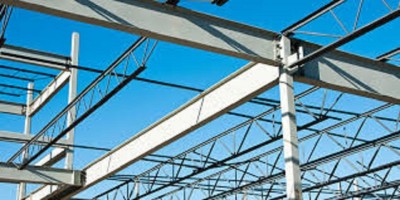Reputable Steel Fixing Services: Ensuring Architectural Integrity
Reputable Steel Fixing Services: Ensuring Architectural Integrity
Blog Article
Comprehensive Analysis of Cutting-Edge Techniques in Steel Manufacture Industry
As the steel fabrication market continues to evolve, the assimilation of innovative techniques has actually ended up being vital for staying affordable and satisfying the demands of modern-day manufacturing standards. From laser reducing developments to the usage of robotics and 3D printing in steel manufacturing, the landscape of manufacture techniques is swiftly changing. With each advancement bringing its own collection of obstacles and benefits, a thorough analysis of these strategies is paramount for firms aiming to improve their processes, boost precision, and eventually, boost the high quality of their steel manufacture output. In this vibrant industry where innovation plays a crucial function, recognizing the nuances of these innovative strategies is not just an alternative but a requirement for those aiming to forge ahead in the ever-evolving globe of steel manufacture.
Laser Cutting Developments
In the realm of steel fabrication, laser cutting developments have transformed the precision and efficiency of metal shaping processes. By harnessing the power of concentrated laser beams, manufacturers can now attain unrivaled degrees of accuracy when puncturing numerous types of steels. This modern technology allows complex styles to be performed with very little material wastefulness, making it a cost-effective solution for sectors needing high precision elements.
One of the vital advantages of laser cutting is its capacity to take care of a large range of materials, consisting of stainless steel, aluminum, and carbon steel, effortlessly. The procedure produces clean, burr-free edges, eliminating the requirement for additional completing steps. The non-contact nature of laser cutting reduces the danger of material contamination, resulting in greater quality end products.
In addition, laser cutting machines can be configured to make swift, precise cuts, significantly lowering production time contrasted to typical cutting approaches. This speed and accuracy make laser reducing specifically appropriate for mass manufacturing settings where effectiveness is critical. As technology proceeds to development, laser cutting is poised to play a progressively important duty in the steel fabrication market.

CNC Machining Innovations
The development of CNC machining technologies has introduced a brand-new era of precision and effectiveness in the steel manufacture sector. Computer Numerical Control (CNC) devices have actually transformed steel construction by using unparalleled accuracy and repeatability in the manufacturing process. Alpha reo. One of the essential developments in CNC machining is the integration of innovative software application systems that make it possible for real-time monitoring and modifications, resulting in improved efficiency and quality assurance
Furthermore, the development of multi-axis CNC devices has permitted the fabrication of complex steel components with intricate designs that were previously challenging to produce. These machines can perform a wide array of machining procedures, consisting of milling, boring, turning, and grinding, all with high degrees of accuracy.
Furthermore, the consolidation of automation and robotics in CNC machining has streamlined production procedures, minimized lead times, and reduced the margin of error. This integration of innovative innovations not just increases efficiency yet likewise guarantees constant quality throughout all produced steel parts. To conclude, CNC machining technologies proceed to drive developments in the steel fabrication sector, setting new requirements for accuracy and productivity.
Automated Welding Technologies
Automated welding technologies have actually transformed the steel fabrication sector, improving efficiency and precision in the welding process. These cutting-edge modern technologies use computer-controlled systems to automate the welding procedure, resulting in greater efficiency levels and improved weld top quality. One of the crucial benefits of automated welding is the capability to perform complicated welds with regular accuracy, reducing the probability of errors and remodel.
Robot welding systems are at the center of automated welding technologies, using exceptional rate and precision. These systems can manage a vast array of welding jobs, from easy to detailed, effortlessly (steel fabricators melbourne). By making use of advanced sensors and software application, robot welders can adapt to variations in material and joint geometry, making certain an uniform and reputable weld
In addition, automated welding technologies improve work environment safety and security by minimizing the exposure of human welders to harmful fumes and extreme warmth. As address the steel fabrication industry continues to progress, including automated welding technologies will certainly be vital for business wanting to stay competitive and satisfy the expanding needs for high-quality bonded products.
Robotics Integration in Construction
Using robotic systems in construction processes has ended up being a critical method for improving effectiveness and precision in contemporary manufacturing environments. Robotics integration in steel fabrication provides a myriad of benefits, including increased productivity, boosted top quality control, and boosted safety and security procedures. These sophisticated robot systems are furnished with innovative sensors and programming capabilities, allowing them to execute detailed jobs with a high degree additional resources of accuracy and repeatability.
One of the key benefits of robotics combination in steel construction is the ability to automate repetitive jobs, such as material handling, cutting, welding, and assembly procedures. This not just quickens production cycles but also lowers the danger of human error, leading to higher general item quality. Furthermore, robots can operate 24/7, significantly boosting manufacturing output and conference tight project target dates.

3D Printing in Steel Manufacturing
Having reinvented the steel manufacture industry with robotics assimilation, the burgeoning exploration of 3D printing in steel production is positioned to more advancement the world of modern-day manufacturing techniques. 3D printing, likewise known as additive manufacturing, uses extraordinary design freedom and complexity, making it possible for the development of detailed steel structures that were formerly unattainable via conventional manufacturing techniques. By utilizing computer-aided layout (CAD) software application, producers can exactly manage the layer-by-layer deposition of steel material, leading to get rid of improved geometries and capabilities.
Among the vital benefits of 3D printing in steel production is its capacity to lower product waste dramatically. Unlike subtractive production procedures where excess product is cut away, 3D printing just utilizes the needed amount of steel required for the final component. This performance not just causes cost savings but also straightens with lasting production methods by reducing environmental influence.
In addition, 3D printing makes it possible for fast prototyping and personalization, enabling the production of tiny sets of complicated steel components with brief preparations. As the technology continues to grow and end up being more accessible, its assimilation right into mainstream steel fabrication procedures is anticipated to drive development and performance throughout the industry.
Verdict
Finally, the steel construction sector has actually seen substantial advancements in techniques such as laser cutting, CNC machining, automated welding, robotics combination, and 3D printing. These innovative modern technologies have reinvented the means steel items are made, bring about increased precision, efficiency, and cost-effectiveness. Continued financial investment in these cutting-edge strategies is critical for the market to remain competitive and meet the demands of modern production procedures.
As the steel construction market continues to advance, the assimilation of cutting-edge strategies has actually ended up being vital for staying competitive and fulfilling the needs of contemporary manufacturing standards.One of the vital benefits of laser cutting is its ability to deal with a broad range of products, get more consisting of stainless steel, aluminum, and carbon steel, with ease.Automated welding modern technologies have revolutionized the steel manufacture sector, improving performance and accuracy in the welding procedure.Having transformed the steel manufacture market through robotics combination, the growing expedition of 3D printing in steel manufacturing is poised to additional advancement the world of contemporary production methods.In conclusion, the steel construction sector has actually seen substantial improvements in methods such as laser cutting, CNC machining, automated welding, robotics assimilation, and 3D printing.
Report this page